Key Takeaways
- DIR/Floortime is a developmental model emphasizing relationships for individual growth, often used with children on the Autism Spectrum.
- Floortime, the practical application of the DIR model, enhances motor skills, sensory integration, and social-emotional skills through meaningful play.
- The DIR/Floortime approach helps navigate developmental delays by tailoring activities to children’s needs.
- Floor play, rooted in the DIR/Floortime model, promotes holistic child development by fostering a sense of self and belonging.
- Implementing DIR/Floortime involves following the child’s lead and using floor play for strategic intervention in social-emotional development.
Understanding DIR and Floortime
The DIR model, an abbreviation for Developmental, Tailored-differences, and Relationship-based model, is an all-encompassing framework to foster healthy socio-emotional and intellectual development. This model emphasizes the importance of relationships for growth and development, particularly in children with Autism Spectrum Disorder.
By understanding the subtle indications of developmental delays, we can more effectively apply the DIR model to support children’s growth. It’s about establishing a supportive environment that enriches a child’s progress, something that has been highlighted as critical in effective autism therapy techniques.
Floortime, the practical application of the DIR model, facilitates emotional and social capabilities by engaging children in meaningful and enjoyable play. This technique typically involves an adult getting down on the floor to join a child in their world, hence the term’ Floortime.’ The goal is to create a nurturing environment that fosters emotional connections and helps children build a solid foundation for their developmental voyage.
The beauty of the DIR/Floortime approach lies in its adaptability. It recognizes that every child is distinct and respects these individual disparities. By meeting children where they are and tailoring activities to their needs and interests, we can help them realize their full potential. DIR and Floortime are potent tools to support healthy growth and development, making a significant difference in the lives of children with developmental challenges.
Role of Floor Play in Development
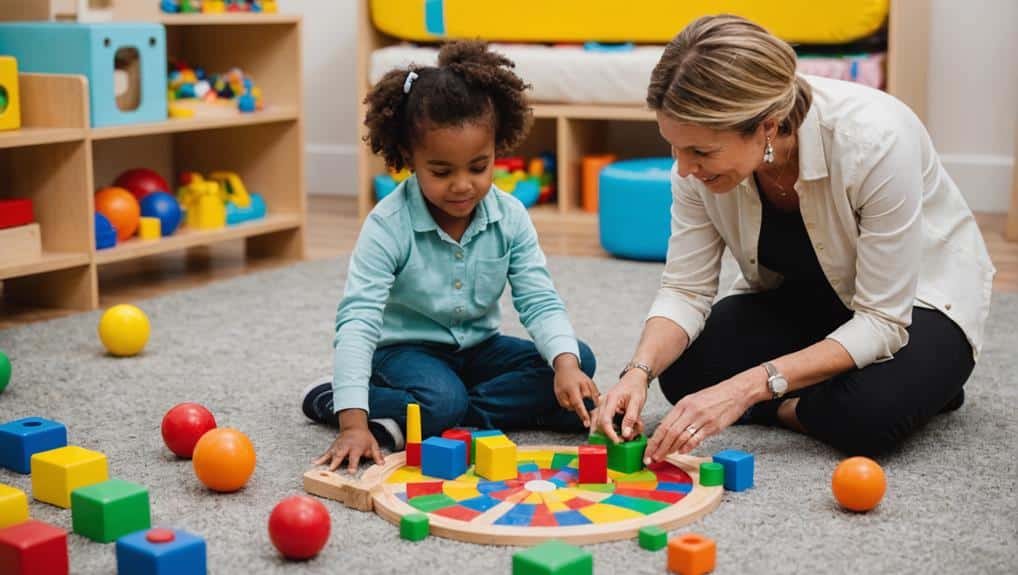
The role of floor play in children’s development, especially in DIR/Floortime, is multifaceted and significant. Not only does it present a platform for the advancement of motor skills and sensory integration, but it also fosters the development of social-emotional skills and relationships, which are vital to holistic child development. As we examine the benefits of floor play and the implementation of DIR/Floortime, we acknowledge the profound impact of these interactions on a child’s developmental trajectory.
Benefits of Floor Play (DIR/Floortime)
Diving into the vibrant world of floor play quickly reveals its pivotal role in development. This engaging method, rooted in the relationship-based model of DIR/Floortime, promotes a holistic approach to child development, enhancing both motor skills and social-emotional aptitude.
Floor play fosters sensory development and cultivates robust social-emotional skills, shaping the child’s sueness. Each interaction is distinctive, encouraging children to express their encounters and emotions freely.
The benefits of floor play can be encapsulated as follows:
- It catalyzes sensory and motor development, vital building blocks in a child’s trajectory.
- It bolsters social-emotional skills, equipping children to navigate interpersonal relationships effectively.
- It upholds the child’s inctiveness, fostering a sense of self and belonging.
Implementing DIR/Floortime
Implementing the DIR/Floortime approach indicates a dedication to nurturing a child through floor play activities. This method goes beyond mere play; it’s a strategic intervention crafted for social-emotional development. By following the children, we can tap into their curiosity, creating a more substantial impact on their learning expedition.
Floor play activities serve as a medium for communication, enabling children to convey their feelings and actions. They offer a secure and familiar setting in which they can navigate the intricacies of their world. This approach is especially advantageous for children facing developmental hurdles or those with specific requirements. They can retrace their path through missed milestones through floor play, gradually building a sturdier foundation for future progress.
Implementing DIR Floortime demands empathy and comprehension, recognizing the distinct pace at which each child evolves. It celebrates individuality, acknowledging that every child is different. This approach establishes a connection between emotions, actions, and communication, enabling children to express themselves more efficiently. The expedition may be arduous, but the benefits are immeasurable, fostering a sense of belonging while encouraging consistent growth.
Key Objectives of the DIR Model
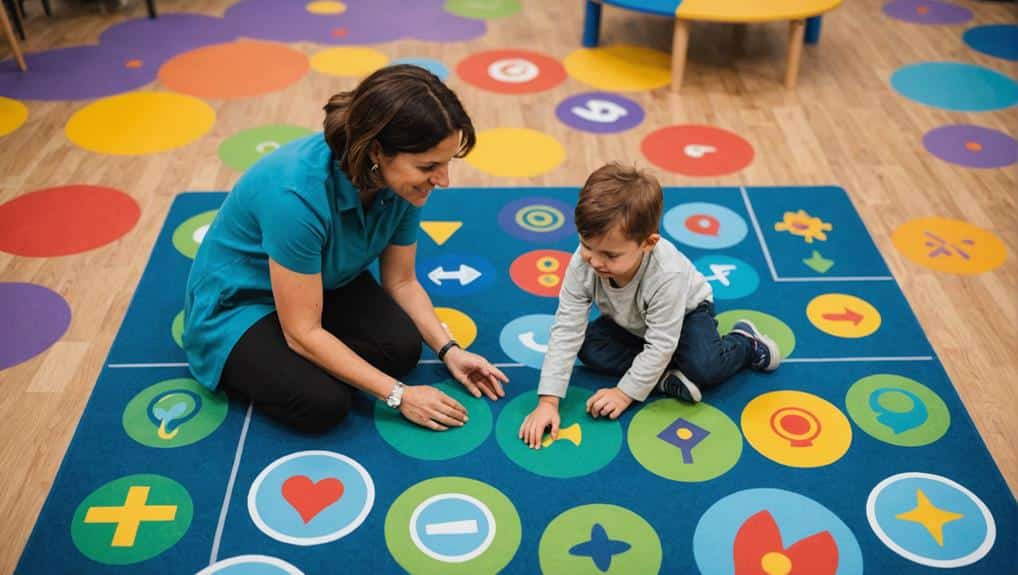
While aiming to build solid foundations for social, heartfelt, and intellectual abilities, the DIR Model also emphasizes understanding and honoring developmental processes. This model, particularly effective for children with autism and other developmental challenges, is rooted in the belief that relationships are central in fueling human development.
- The DIR Model appreciates the person’s perceptions and interactions with the world. It acknowledges the importance of understanding their developmental process and respects how they express their social and heartfelt abilities.
- Relationships are at the core of this model. The DIR Model suggests that relationships, especially with caregivers, provide a safe and nurturing environment for the person to investigate, learn, and grow.
- The DIR model aims to facilitate the development of essential abilities. It focuses on building a person’s social and intellectual skills, viewing these as interconnected spheres of development.
In essence, the key objectives of the DIR Model revolve around fostering development, nurturing relationships, and respecting the distinct ways individuals experience the world.
Differences Between DIR and Floortime
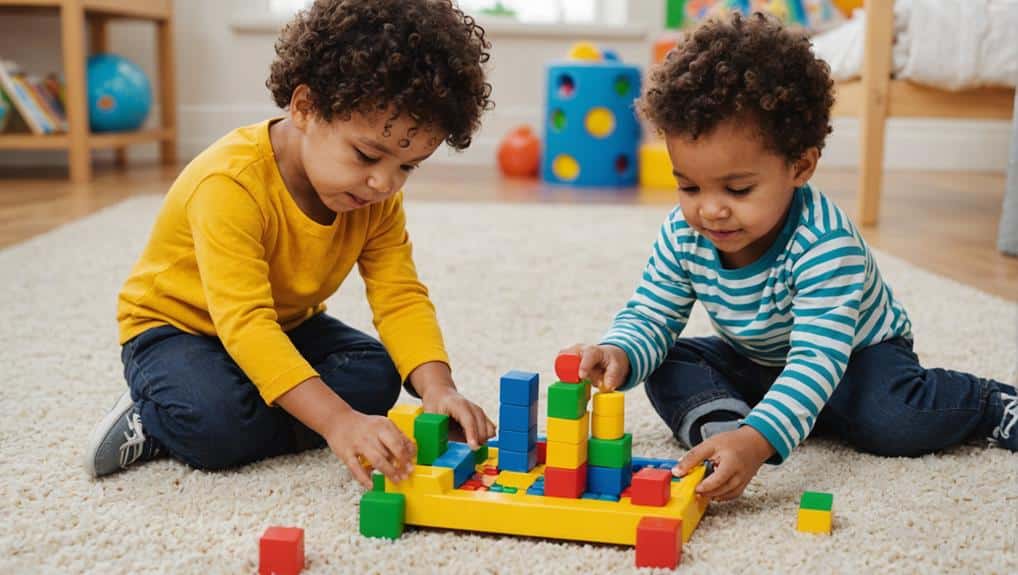
One might encounter the terms DIR and Floortime by exploring the landscape of developmental models. Understanding the differences between these models is essential for caregivers and therapists seeking to support a child’s development.
DIR, or developmental, personal-difference, relationship-based model, provides a thorough understanding of individuals’ models, emphasizes the foundational role of relationships in development, and offers a theoretical framework for understanding how growth occurs. It’s an approach that encourages caregivers to observe and interpret a child’s developmental profile and relational style.
On the other hand, Floortime is the practical application of the DIR model in therapy. It provides specific strategies and techniques for promoting development through interactive play. In Floortime, caregivers and therapists engage with children on the floor. This type of play supports growth and learning by meeting children at their current developmental level and building upon their natural interests.
While DIR focuses on the guiding principles of development, Floortime offers hands-on guidance for caregivers to execute these principles through interactive play. Both work harmoniously to integrate theory with practical strategies, promoting healthy growth.
Floor Play Activities and Benefits
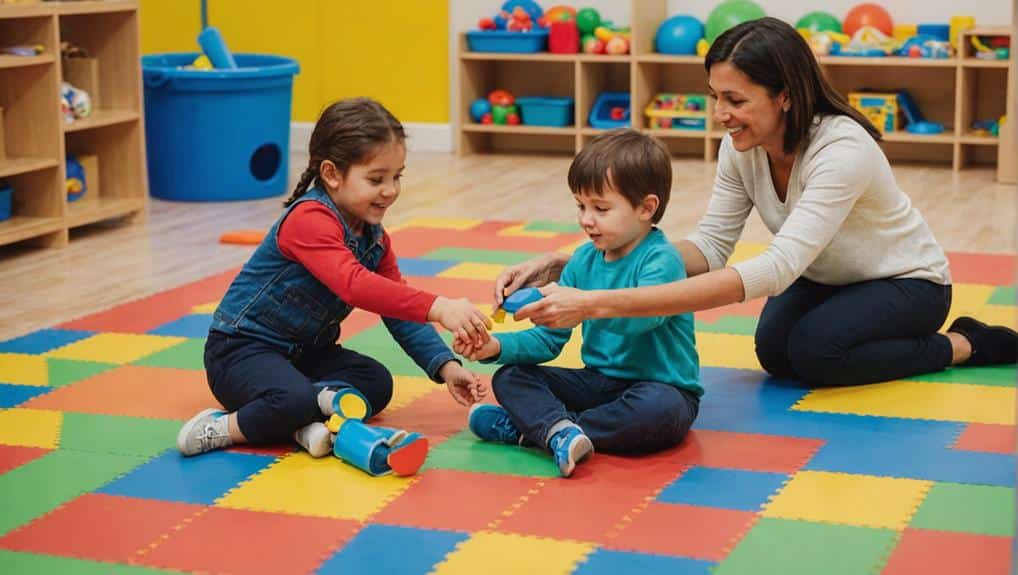
Within the realm of child development, floor play activities are a cornerstone for fostering a range of developmental milestones. These activities, such as playing with toys, building forts, or engaging in imaginative play, provide children with a stimulating environment to discover and interact. Research indicates that playing on the floor promotes motor development, sensory exploration, and cognitive skills.
The benefits of floor play activities are even more significant for children on the autism spectrum. The DIR/Floortime approach utilizes these activities to support the integration of reflexes and foster typical development in these children.
To elucidate, consider the following:
- Floor play activities are tailored to align with children’s children’s preferences, enhancing engagement and creativity.
- Interacting with children during these activities is vital for their development, early learning experiences, and sense of belonging.
- Depending on the child’s developmental stage, activities can be adjusted to be more challenging or supportive.
DIRFloortime Training Overview
The DIR Floortime training, an essential certification for therapy professionals, offers a thorough understanding of the Developmental, Personal differences, and Relationship-based (DIR) model. It equips professionals with the tools to effectively support children with developmental challenges, focusing on relationship-building and following the child’s lead training. It becomes a valuable resource for therapists, educators, and caregivers aiming to nurture children by customizing interventions to unique needs and developmental levels.
Training Certification Process
Therapy professionals working with children regularly undergo the DIR Floortime training, a certification process that provides an in-depth understanding of the DIR Floortime model. This extensive program immerses therapists in the principles and application of the model, ensuring their proficiency in supporting children with developmental challenges.
The training focuses on:
- Understanding the fundamentals of child development
- Enhancing relationship-building skills
- Creating personalized intervention strategies
Through this process, therapy professionals are equipped with the necessary tools to implement the DIR Floortime techniques effectively. This training enriches their expertise and cultivates an environment of mutual respect and understanding. It emphasizes the importance of personalized intervention strategies, fostering a deeper connection between the therapist and the child.
This certification process is more than just training; it affirms commitment to providing the best care possible for children with developmental challenges. This sense of belonging and shared commitment amongst certified DIR Floortime professionals creates a supportive community dedicated to advancing therapy practices. An investment in DIR Floortime training is an investment in the well-being and development of the children they serve.
Benefits for Therapy Professionals
Diving into the world of DIR Floortime training, therapy professionals stand to reap significant benefits. It’s more than a model; it’s a path fostering profound connections with children and promoting social-emotional development. This training allows professionals to follow the child’s lead child’s, challenging them in a supportive environment that encourages growth and development.
DIR Floortime training places a strong emphasis on floor play. This type of interaction is known to be instrumental in promoting motor development and building social-emotional skills. Therefore, the trained professional can provide a nurturing environment where children can freely investigate, learn, and grow with the guidance of a caring adult.
Notably, DIR Floortime training isn’t restricted to children with Autism Spectrum Disorder. This practical model can be applied to any child-adult relationship, making it a versatile tool for therapy professionals. The training provides a broader opportunity to connect with children, understand their needs, and guide them toward fulfilling their potential. This empathetic approach fosters a strong sense of belonging, making therapy a positive and enriching experience for all involved.
Floortime at Home: Practical Tips
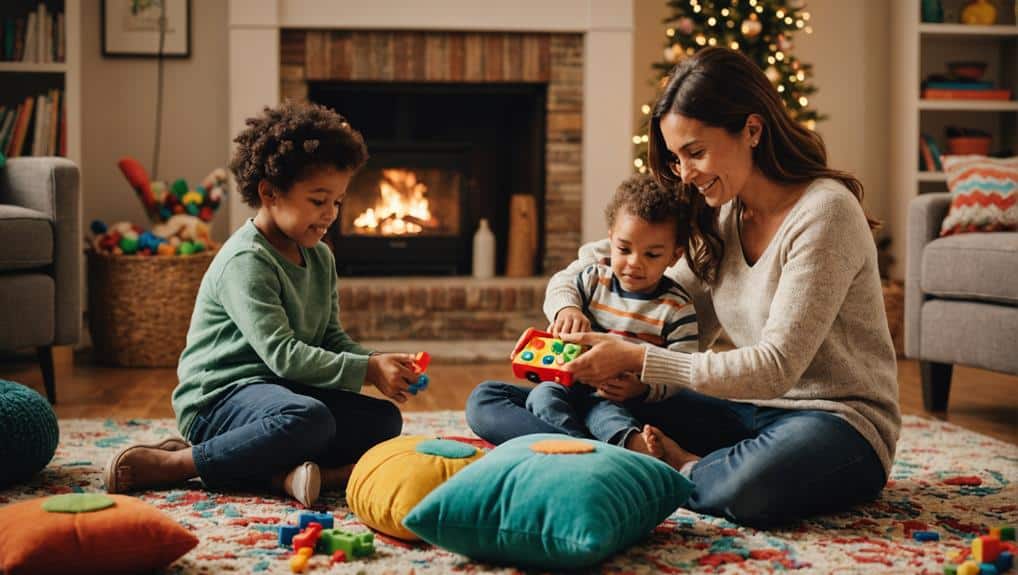
Implementing Floortime at home offers a flexible and convenient method to support children with autism or developmental challenges. It can be integrated into diverse home settings and daily routines, providing an adaptable approach to nurturing social-emotional growth and enhancing communication skills.
The beauty of Floortime at home lies in its versatility. It can occur anywhere—from the house to the backyard or even during grocery store errands. The objective is to immerse children in authentic interactions stimulating their developmental capabilities.
Here are some practical tips for implementing Floortime at home:
- Use naturally occurring situations for interactions. This can be during mealtime, bath time, or bedtime.
- Always being responsive to the child’s cues helps build two-way communication.
- Keep the interactions enjoyable and significant. The goal is to engage the child, not overwhelm them.
These strategies support the child’s growth and cultivate a connection between them and their caregivers. Parents and caregivers can actively contribute to their child’s development and voyage by incorporating floortime at home.
Dr. Stanley Greenspan
Dr. Greenspan is considered a pioneering figure in autism therapy; Dr. Stanley Greenspan co-developed DIR/Floortime, a revolutionary relationship-based therapy method. His work, rooted in emotional development and the belief in personal potential, offers a compassionate approach to therapy, focusing on meaningful relationships and the child’s development path.
Dr. Greenspan provides a thorough guide to implementing Floortime principles in therapeutic settings and everyday interactions. Steeped in his profound understanding of autism and empathetic approach, they offer invaluable insights to parents, caregivers, and therapists alike.
The International Council on Development and Learning (ICDL) offers a range of courses and training grounded in Dr. Greenspan’s groundbreaking Greenspan’s resources, tied closely to the principles of Floortime, provide practical applications and strategies that enable the child to connect with the world around them on their terms.
Dr. Stanley Greenspan’s legacy is his hope for those seeking to understand and support individuals with autism. His work encourages us to see beyond the diagnosis, fostering meaningful relationships and revealing personal potential by applying DIR/Floortime principles.
Frequently Asked Questions
What are the key DIR/Floortime insights for enhancing my child’s development?
DIR/Flchild’s insights highlight the importance of engaging in floor play to support your child’s unique development. Following their lead during play can foster stronger emotional connections and help them build crucial motor and social skills.
What Is the Difference Between DIR and Floortime?
The difference lies in their function: DIR is a theoretical framework for understanding individual development. Floortime is a specific approach that applies these principles for developmental support, particularly in children.
What Is the Floortime Intervention?
The Floortime intervention is a relationship-based therapeutic approach for children with developmental challenges. It emphasizes parent-child interaction, improving communication, and achieving developmental milestones through play in a calm and familiar environment.
What Is the Difference Between ABA and DIRfloortime?
ABA and DIRFloortime differ in approach. ABA emphasizes behavior modification through reinforcement, while DIRFloortime focuses on emotional and relationship-based growth. It follows the child’s lead by interacting with the child’s play to support their distinct developmental path.
What Is the DIR Method for Autism?
The DIR method for autism is a thorough framework that focuses on developing social, personal, and intellectual capacities through a personalized and relationship-based approach, tailoring interventions to each child’s needs.
Conclusion
To summarize, DIR/Floortime and floor play offer numerous benefits for children with Autism Spectrum Disorder. DIR/Floortime insights show that this approach provides a supportive environment where children can thrive. DIR/Floortime promotes essential skills like social communication, problem-solving, and emotional connections by focusing on meaningful interactions and active participation.
These practical strategies involve the entire family, which is crucial for long-term success. The relationship-based approach helps build stronger connections between parents and children. This involvement fosters a deeper understanding of the child’s developmental challenges and supports the development of vital social and daily living skills.
Studies show that children engaged in DIR/Floortime significantly improve social engagement and cognitive development. These positive outcomes highlight how DIR/Floortime can make a real difference in addressing developmental delays and enhancing overall growth. By encouraging child-led play and collaborative approaches, this therapy creates a holistic approach to supporting each child’s unique needs.
Incorporating DIR/Floortime into your child’s routine can lead to meaningful behavioral changes and improved developmental progress. This effective intervention ensures that children with autism can develop their potential and enjoy a more enriched and connected life.

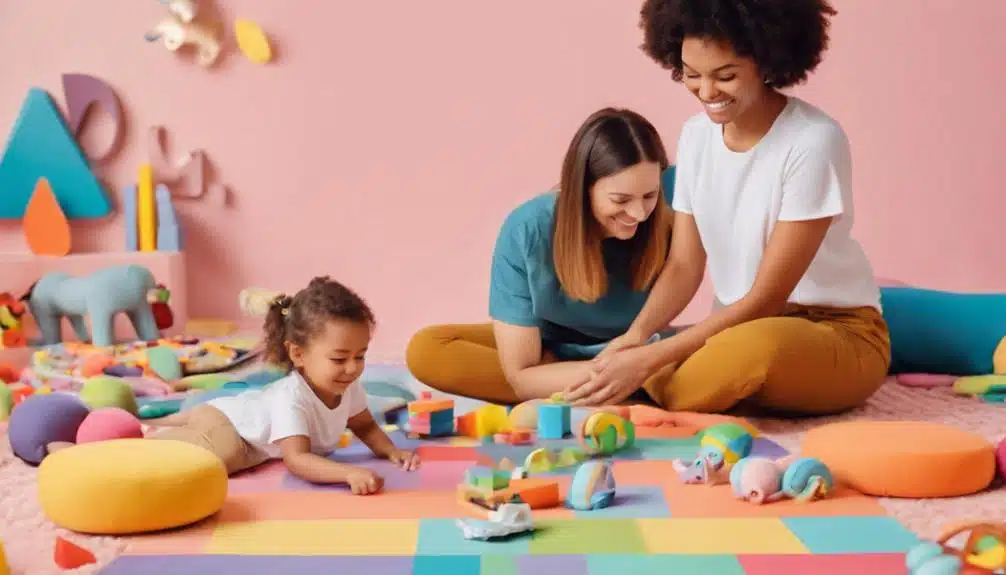
Recent Comments